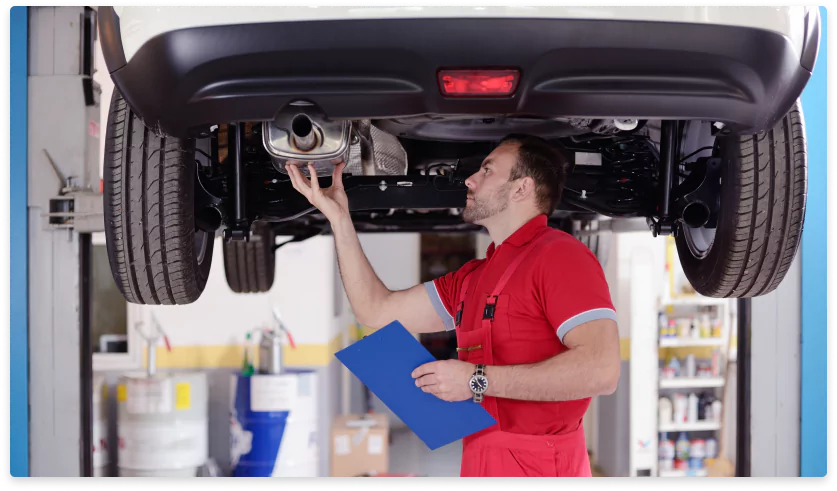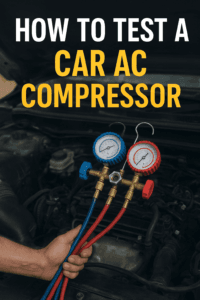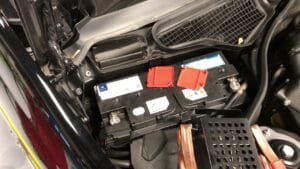Experiencing a car shaking while it idles can be frustrating and worrying. It disrupts the usual smoothness of sitting at a traffic light or waiting in line at the drive-thru. Often, the issue disappears as soon as the vehicle moves, leading to confusion about whether it’s serious or just a minor inconvenience.
The problem is more than just an annoyance—it’s a signal that something in your vehicle may not be functioning correctly. While the car’s motion at higher speeds might mask the problem, the idle vibrations can indicate underlying mechanical or electrical issues.
In this guide, we’ll break down the reasons behind this common issue and provide practical steps you can take to diagnose and potentially resolve it.
Common Causes of Car Shaking at Idle
Several factors can cause your car to shake when it’s idling but not while it’s moving. These range from simple fixes to more complicated mechanical problems. Below are some of the most common causes:
1. Engine Misfires
When your car’s engine misfires, it means that one or more cylinders are not firing properly. This often leads to uneven performance and shaking when the car is idle. As you increase speed, the misfires may become less noticeable because the engine is working harder, compensating for the faulty cylinder(s). Misfires can be caused by several factors, including worn spark plugs, a malfunctioning ignition coil, or a clogged fuel injector.
Diagnosing Engine Misfires:
- Check Engine Light: If your check engine light is on, a diagnostic scan can tell you which cylinder is misfiring.
- Examine Spark Plugs and Coils: If your spark plugs or ignition coils are old or damaged, replacing them may solve the problem.
- Fuel System Inspection: A clogged fuel injector could also be the culprit. Cleaning or replacing the injectors might be necessary.
2. Dirty or Clogged Fuel Injectors
Fuel injectors are designed to spray a precise amount of fuel into the engine’s combustion chamber. When they get clogged or dirty, they can’t deliver the right amount of fuel, leading to a rough idle.
This problem tends to smooth out at higher speeds because the engine is demanding more fuel and working at a faster pace. Regular fuel injector maintenance can help avoid this issue.
Solutions for Clogged Fuel Injectors:
- Fuel Injector Cleaner: Adding a fuel injector cleaner to your gas tank can help clear minor clogs.
- Professional Cleaning: If the problem persists, you may need a mechanic to professionally clean or replace the fuel injectors.
3. Worn Motor Mounts
Motor mounts are designed to secure the engine in place while absorbing vibrations. When they wear out or break, the engine can move more than it should, causing noticeable shaking when the car is idling. The vibration often diminishes when you’re driving, as the forward motion reduces the pressure on the mounts.
Signs of Worn Motor Mounts:
- Excessive Vibrations at Idle: If you notice intense vibrations while your car is idling but not while driving, worn motor mounts could be the cause.
- Clunking Sounds: Sometimes, you’ll also hear clunking noises, particularly when shifting gears or accelerating from a stop.
4. Vacuum Leaks
Your engine relies on a balanced air-to-fuel ratio to run smoothly. A vacuum leak occurs when air enters the engine from outside sources, disrupting this balance. This can lead to shaking at idle since the engine isn’t getting the correct mixture to maintain smooth operation.
At higher speeds, the issue might not be as noticeable because the engine’s demands increase and offset the imbalance.

How to Spot Vacuum Leaks:
- Hissing Sounds: One of the most common signs of a vacuum leak is a hissing noise coming from the engine area.
- Unsteady RPMs: If your engine’s idle RPM fluctuates unexpectedly, it could indicate a vacuum leak.
5. Faulty Idle Air Control Valve (IACV)
The Idle Air Control Valve (IACV) helps regulate the engine’s idle speed by controlling the amount of air that bypasses the throttle. If this valve becomes dirty or malfunctions, it can lead to an unstable idle, causing the car to shake.
While the issue is more noticeable when the car is idle, driving usually smooths it out because the engine speed is higher, reducing the valve’s role.
Troubleshooting a Faulty IACV:
- Cleaning or Replacement: Sometimes, cleaning the valve is enough to restore smooth idling. In other cases, a replacement might be necessary.
- Erratic Idle Speed: If the idle speed fluctuates up and down, it’s another sign that the IACV might be failing.
6. Transmission Issues
Transmission problems can also cause your car to shake at idle. This happens when the transmission isn’t properly transferring power from the engine to the wheels, leading to a rough idle. In some cases, the issue disappears at higher speeds as the transmission shifts through gears more efficiently.
Signs of Transmission Issues:
- Delayed Gear Engagement: If your car hesitates when shifting from park to drive or reverse, it could point to a transmission issue.
- Fluid Levels: Low or dirty transmission fluid can contribute to rough idling.
7. Exhaust System Problems
Issues with the exhaust system, such as leaks or a faulty muffler, can cause vibrations while the car is idling. This can also result in a louder than usual engine noise. As you accelerate, the engine’s increased activity can mask these symptoms, making it seem like the issue has disappeared.

Exhaust System Check:
- Listen for Unusual Sounds: A rattling or loud exhaust noise at idle could point to a problem.
- Visual Inspection: Look for visible signs of damage to the exhaust system, such as rust or holes in the muffler or pipes.
8. Dirty or Faulty Mass Air Flow Sensor
The mass air flow (MAF) sensor measures the amount of air entering the engine to ensure the proper air-to-fuel ratio. If the MAF sensor gets dirty or starts to malfunction, it can send incorrect information to the engine control unit (ECU), causing rough idling. As with other issues, the problem often seems to resolve itself at higher speeds.
Addressing MAF Sensor Problems:
- Clean the Sensor: Use a specialized cleaner to remove debris from the MAF sensor.
- Replace if Necessary: If cleaning doesn’t fix the issue, the sensor may need to be replaced.
9. Timing Belt or Chain Issues
A worn or loose timing belt or chain can also cause the engine to shake while idling. The timing belt ensures that the engine’s valves open and close in sync with the pistons. If the timing is off, it can lead to rough idle performance. The symptoms might be less noticeable at higher speeds due to the engine’s increased momentum.
Timing Belt Inspection:
- Check for Wear and Tear: Timing belts should be replaced at regular intervals (as recommended by your car’s manufacturer).
- Listen for Noises: A loose timing belt might produce a ticking or rattling noise.
10. Engine Mounts and Vibrations
In some cases, the engine mounts are not completely worn but have weakened over time. This can result in smaller but still noticeable vibrations when the car is idling. Even though the shaking may not be severe, it’s a sign that the mounts may need to be inspected or replaced in the near future.
Solution:
- Professional Inspection: Have a mechanic check the engine mounts to ensure they are still functioning correctly.
What You Can Do If Your Car Shakes at Idle
Now that you have a better understanding of what could be causing your car to shake while idling, you may be wondering what steps you should take next. Here are some practical actions you can try.
1. Perform a Visual Inspection
Sometimes, a quick visual inspection under the hood can reveal obvious problems, such as loose hoses, damaged wires, or worn-out parts. If you notice anything unusual, such as a disconnected vacuum hose or a cracked spark plug, addressing these issues may solve the problem.
2. Check for Diagnostic Codes
If your car’s check engine light is on, using an OBD-II scanner can help you pinpoint the issue. The scanner will read any fault codes stored in your car’s computer, giving you a clearer idea of what’s wrong.
3. Consult a Mechanic
If you’re unsure of what’s causing the shaking or don’t feel comfortable attempting repairs yourself, it’s always a good idea to consult a professional mechanic. They can perform a thorough diagnostic and recommend the best course of action.
4. Regular Maintenance
To prevent issues like shaking at idle, it’s essential to keep up with regular maintenance, such as replacing spark plugs, changing filters, and cleaning fuel injectors. Staying on top of these routine tasks can help keep your car running smoothly.
Conclusion
A car that shakes while idling but smooths out while driving can be a symptom of a range of issues, from simple maintenance needs to more significant mechanical problems.
By understanding the common causes and knowing how to address them, you can help keep your car running smoothly and avoid costly repairs down the road. Whether it’s a simple fix like cleaning the fuel injectors or a more involved repair like replacing engine mounts, taking care of the issue sooner rather than later is always a smart choice.




